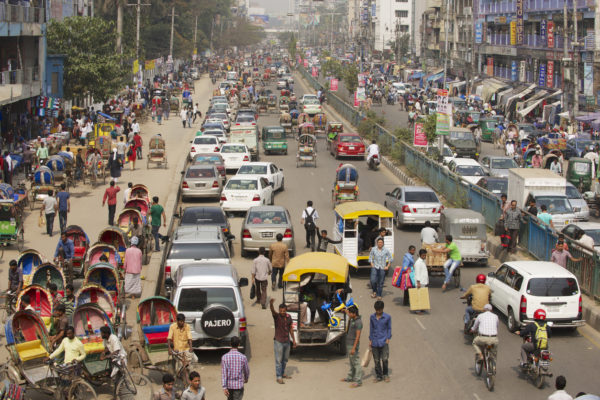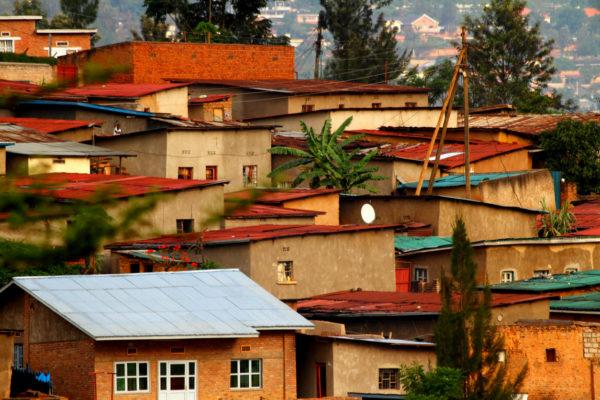Studying Cities from the Inside Out: Why Partnership and Interdisciplinarity Matters
With over half of the population living in urban areas and the numbers increasing daily, cities are facing unprecedented demographic, environmental, economic, social and spatial challenges. That is a call to which the GCRF Centre for Sustainable Healthy and Learning Cities and Neighbourhoods (SHLC) is already responding, as described in this blog reposted from the SHLC website.
Our international team of experts studying urban transformations in both large and small cities in the following countries: South Africa – Cape Town and Johannesburg; Tanzania – Dar es Salaam and Ifakara; Rwanda – Kigali and Huye; India – Delhi and Madurai; Bangladesh – Dhaka and Khulna; China – Chongqing and Datong; Philippines – Manila and Batangas.
Films like “Slumdog Millionaire” and “Favela Rising” have brought to the public eye images of the slums of big, developing world cities. But what of other communities? They may be slightly less poor but they still have their own problems, lacking services and the other ingredients of a productive urban life.
At SHLC we are working to fill this gap through capacity strengthening activities and comparative studies of different neighbourhoods across 14 African and Asian cities.
 Our project is looking specifically at fast-growing cities across Africa and Asia as it is here that urban populations have undergone the fastest change – and over the next 10-20 years it is here that we will see the greatest urban growth.
Our project is looking specifically at fast-growing cities across Africa and Asia as it is here that urban populations have undergone the fastest change – and over the next 10-20 years it is here that we will see the greatest urban growth.
The speed and scale of this increase has created a lot of opportunities – but also many problems. Rapid urban sprawl, migration and population growth have led to a shortage of housing, inadequate water supply and pollution: migrants moving into cities often find themselves living in poor neighbourhoods and the inequality in living standards we see in these neighbourhoods is a major challenge.
Why neighbourhood matters
If you just look at a city as a whole, you will miss the full picture. So, instead, we are focusing on the neighbourhoods inside cities to explore how cities are changing bit by bit. We are not only looking at poorer neighbourhoods, we are looking at all different types of neighbourhoods across the whole city – from slums to gated communities and everything in between.
Where do the poor people live, where do the rich people live, and what about the people in between? And, most crucially, how do they live?
Studying cities “from the inside out” using neighbourhood level analysis is a new approach when it comes to researching cities in developing countries.
Collaboration
Another important element of our work is its collaborative nature. In the past, international collaboration tended to mean that experts from the developed world telling developing countries how to build cities using the ‘Global North’ experience.
This approach is not suitable. Cities in developing country have grown under very different economic, political and social conditions. Many cities, like Delhi, Cape Town and Manila, have very distinctive and unique features which older industrial cities in the West do not share.
By bringing developing country researchers together we are not just sharing knowledge between the ‘Global North’ and ‘Global South’, we are focussing on knowledge transfer and sharing learning experiences between developing countries.
For example, our case study cities in China, India and South Africa – the so-called ‘BRICS’ countries and emerging economies – have developed quite differently and at different rates. But their neighbourhoods show some similar features. Relatively poorer developing countries, like the Philippines, Bangladesh, Tanzania and Rwanda, have a different level of economic development, so their cities are facing slightly different challenges. By comparing similarities and differences between all of our case study cities we will gain greater understanding and insight into how cities work and how we can make the city work better for all.
Interdisciplinary research

Urbanisation is a human activity. The city is a place for production, a place for living and a place for education and place for politics. It is a complicated human system and process. If we were only to do our neighbourhood research from one aspect, we would always face limitations.
In the past, a lot of ‘sustainable’ cities research has focused very much on environmental costs like pollution. Our research goes further and pays more attention to the social and economic sustainability of communities from a variety of different disciplines.
We know that for a city to be ‘sustainable’ it tends to be healthy: healthy people tend to learn better, and to be healthy and educated you need a sustainable environment to live in. So to examine these complicated neighbourhoods and cities from a combined multi-disciplinary approach is much better than just looking at the city from an urban planning perspective.
For example, high-rise and high-density neighbourhoods have been constructed to accommodate a rapidly expanding population. But who is going to live there? Do they bring cars, or not? How will this affect congestion and pollution? Will there be learning opportunities nearby? How will living in high-density buildings impact well-being? Is the neighbourhood close to employment opportunities? These are just a few of the questions that will be under discussion today as experts across examine global urbanisation.
This blog has been reposted from the SHLC website